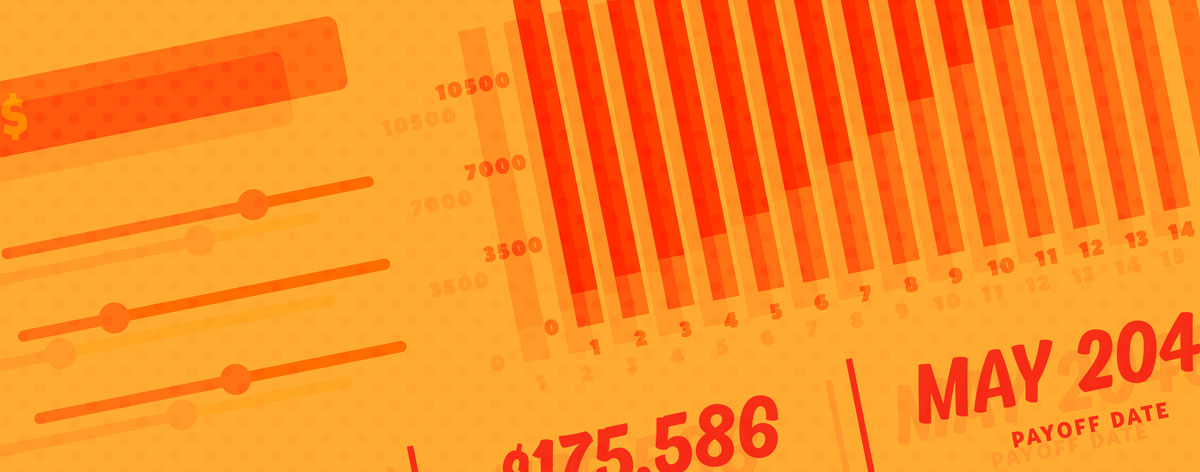

How It Works
Interest is a way for a lump sum of money to grow, generally by a percentage of the total. This percentage is the interest rate. Interest can be earned or owed. When something earns interest, a percentage of the money is added to it at predetermined intervals. That interval could be daily, monthly, yearly, or anything in between. Owed interest really only applies when borrowing money. Rather than just paying back the exact amount that was borrowed, owing interest means borrowers pay back more. How much more depends on the type of interest and how it accrues.
Earning Interest
Earning interest is pretty straightforward. Let’s say you earn 5% interest on a $100 account. That means you’ll yield 5% (or $5 in this case) into that account each year. Interest is a great way to grow your savings without actively doing anything. And, since the most common way to earn interest is to keep your money in a federally insured account at a financial institution, you don’t risk losing money like you do in an investment. The drawback is that interest rates tend to be fairly low, so it’s likely you won’t earn as much as you would in a high-yield investment.
The most basic option for earning interest is a savings account, which is a safe place to store your money and make transfers to and from while earning a small amount of interest. CDs and share certificates, on the other hand, generally earn higher interest rates than regular savings accounts, but the money can only be withdrawn after a set date (called the maturity date).
When looking into these accounts, you’ll usually see an APY (annual percentage yield) associated with them, rather than or along with an interest rate. APY represents the percentage you’ll earn after compounding. The interest rate, on the other hand, is more basic and doesn’t consider all factors. Thus, the APY is more helpful and accurate when estimating how much you’ll earn in interest.
Paying Interest
To put it simply, interest increases the total that you pay back on borrowed money. For example, if you borrowed $100 with 5% interest, you would owe $105 back to the lender. But, just like when earning interest, things can get a bit more complicated when you take into consideration borrowing money over multiple years and fees that the lender charges for borrowing money. That’s why lenders generally express interest on borrowed money as an APR (annual percentage rate). Like an APY, the APR is a more complete picture of what you’ll actually owe. The specifics of how interest works on borrowed money depend on the lender, timeline, and type of interest.
With most loans, a section of your payment goes toward interest and a section goes toward paying back what you borrowed. When you pay more than your minimum, the extra money pays down what you owe, which can help you pay your loan back faster and owe less in interest overall. This is why you’ll owe more interest on the same amount of money with a longer loan than you do on a shorter loan because you are paying interest for longer.
With credit cards, you won’t owe interest unless you carry a balance over from month to month, which is why it’s important to fully pay off your credit card statement balance before the due date whenever you can. If interest begins to accrue, it compounds daily (more on that in a second). This means that the amount you owe goes up quickly, making credit cards a dangerous way to accumulate hard-to-overcome debt. Credit cards also tend to have higher interest rates, which means you’re paying back a lot relative to how much you borrowed.
What is the difference between simple interest and compound interest?
The simplest form of interest is the aptly named simple interest. Simple interestearns or charges interest only on the original amount borrowed or deposited, called the principal. So, if you have $1,000 in a savings account that earns 10% simple interest, every year $100 is added to the account.
Then what is compound interest? Compound interest earns interest on the initial principal plus any earned interest. So, in the example above, the first year you earn $100 in interest. The next year, you earn 10% interest on the full account total—now $1,100. That is $110 in interest. The next year, you get 10% of the new total of $1,210, and so on. After 5 years, you end with a total of $1,610 from compound interest and only $1,500 with simple interest. You can see how compound interest helps the total grow exponentially faster than simple interest.
Explore how your savings grow differently with either form of interest with the Simple Vs. Compound Interest calculator below:
This idea works similarly when you owe money. With a simple interest loan, you’re only ever charged interest on the principal. As you reduce the principal with each payment, you owe less interest, simply because you owe less principal. With compound interest, you’re charged interest on the principal plus any accumulated interest.
While simple in theory, interest is one of the most powerful financial concepts when it comes to earning and owing money. It’s important to understand how to make interest work for you so that you don’t end up owing more than you expect.
Neither Banzai nor its sponsoring partners make any warranties or representations as to the accuracy, applicability, completeness, or suitability for any particular purpose of the information contained herein. Banzai and its sponsoring partners expressly disclaim any liability arising from the use or misuse of these materials and, by visiting this site, you agree to release Banzai and its sponsoring partners from any such liability. Do not rely upon the information provided in this content when making decisions regarding financial or legal matters without first consulting with a qualified, licensed professional.

